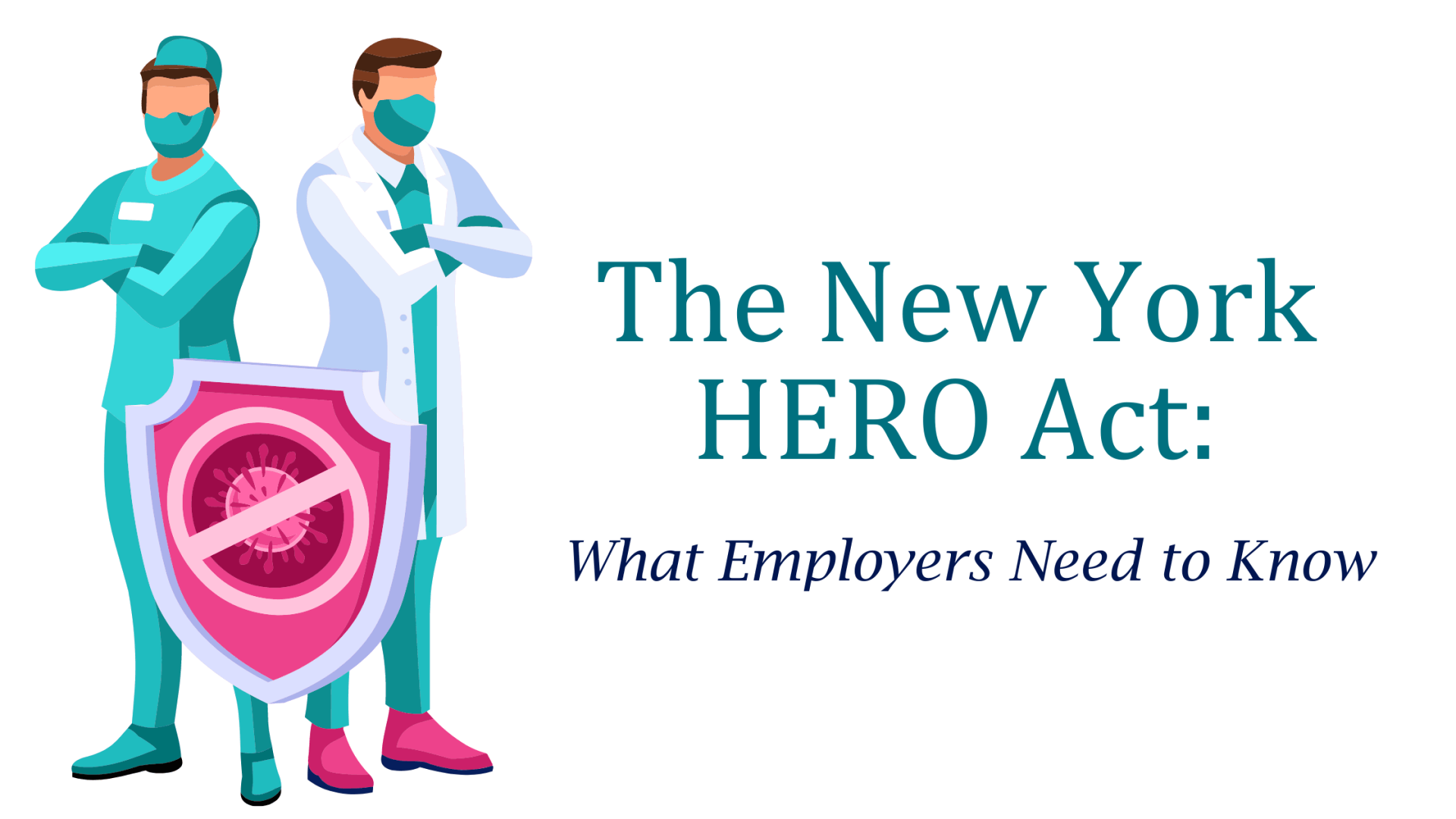
New York State HERO Act Prevention Plan Materials Released
Blog updated: 7/14/2021
On July 6, 2021, the New York State Department of Labor (NYS DOL) in conjunction with the New York State Department of Health (DOH), released its Airborne Infectious Disease Exposure Prevention Standard (the “general standard”), an Airborne Infectious Disease Exposure Prevention Plan (the “model”), and 11 New York State industry-specific templates. Together, these form the basis for the New York State Health and Essential Rights (HERO) Act signed into law by Gov. Andrew Cuomo on May 5, 2021.
An airborne infectious disease exposure prevention plan must go into effect when the New York State Commissioner of Health determines that a highly contagious communicable disease poses grave risk to public health, much like Covid-19; however, there is no such prevention plan in effect at this time.
Employers have 30 days from the publication of these standards, or until August 5, 2021, to do one of the following:
1. Adopt one of the New York State Industry Specific Exposure Prevention Plan templates that apply to your current industry, such as:
- Agriculture
- Construction
- Delivery Services
- Domestic Workers
- Emergency Response
- Food Services
- Manufacturing and Industry
- Personal Services
- Private Education
- Private Transportation
- Retail
2. Develop and adopt an alternative plan that meets or exceeds the minimum standards set forth by the NYS DOL.
Please refer to the NYS DOL website for both the prevention standard and model plan in English. Check back in the coming days for plans in Spanish.
- The Airborne Infectious Disease Exposure Prevention Standard
- Model Airborne Infectious Disease Exposure Prevention Plan
Another key factor to the HERO Act is that once a plan is created, it must be released company-wide to all employees no later than September 4, 2021 (best by Friday, September 3). In addition, the plan must be posted visibly in the workplace, and it must be added to your Employee Handbook (if you have one). Employers are not required to provide hard copies of the plan to employees, but it must be communicated verbally to each employee individually or in a group setting. If a company closes down as a result of airborne infectious disease exposure, however, all employees must be provided with a copy of the plan within 15 days upon their return to work. It must also be provided, upon request, to all employees, employee representatives, independent contractors, collective bargaining representatives, the NYS DOL, and the NYS DOH.
Effective November 1, 2021, if you happen to be an employer of ten or more employees, you must allow employees to create a workplace safety committee to evaluate health and safety issues, and develop or evaluate current workplace health and safety policies.
Enforcement and Anti-Retaliation
Employers who do not adopt a plan could be penalized up to $50 per day until a plan is put in place. If a company has a plan in place, but refuses to follow it during an airborne infectious disease period, they could incur civil fines anywhere between $1,000-$10,000. These fines may increase for repeated plan violations.
Under certain conditions, employers are prohibited from retaliating against an employee or employees if they refuse to return to work as a result of unsafe working conditions or the risk of airborne infectious disease exposure. They are:
- The employee(s) must have provided the employer with appropriate notice that they failed to mitigate the risk of exposure or appropriately fix the working conditions; or
- The employer knew of the risk of exposure to the employees and failed to act. Working conditions that are not in line with the rules and provisions of the HERO Act, or orders from government organizations, would meet this requirement.
The NYS DOL will continue to update the public with any changes as they become available.
Please call 585-750-3246 to speak to your SimcoHR Business Partner about the NY HERO Act, or about adding this policy to your Employee Handbook. If you do not have an Employee Handbook yet, we can create one for you. Call us!
Sources:
• NYS HERO ACT: Protecting New York Workers from Airborne Diseases
• HERO Act Airborne Infectious Disease Prevention Plan Materials Released
• NY HERO Act Standards & Template Policies Released – Employer Action Required
You may also be interested in reading: NY HERO Act – Deadline to Implement Coming September 5
Sign up for our newsletter.




